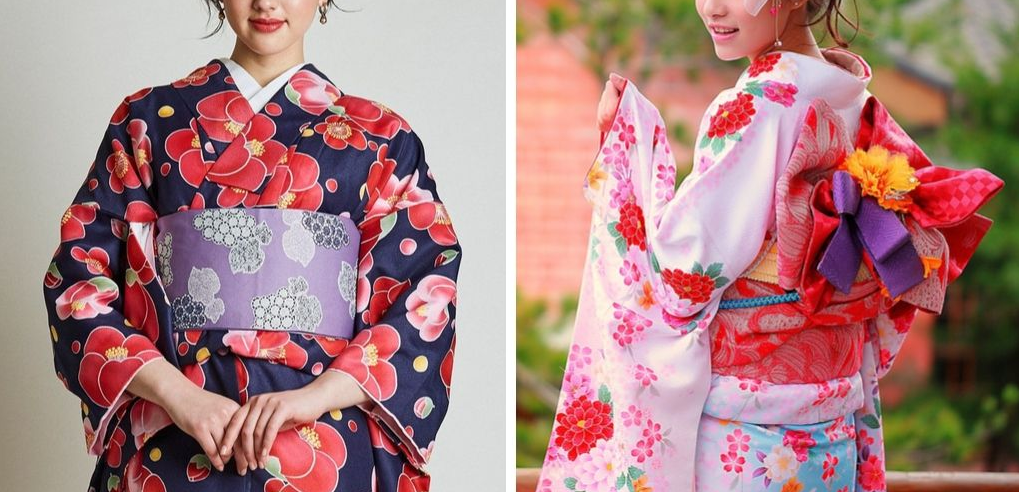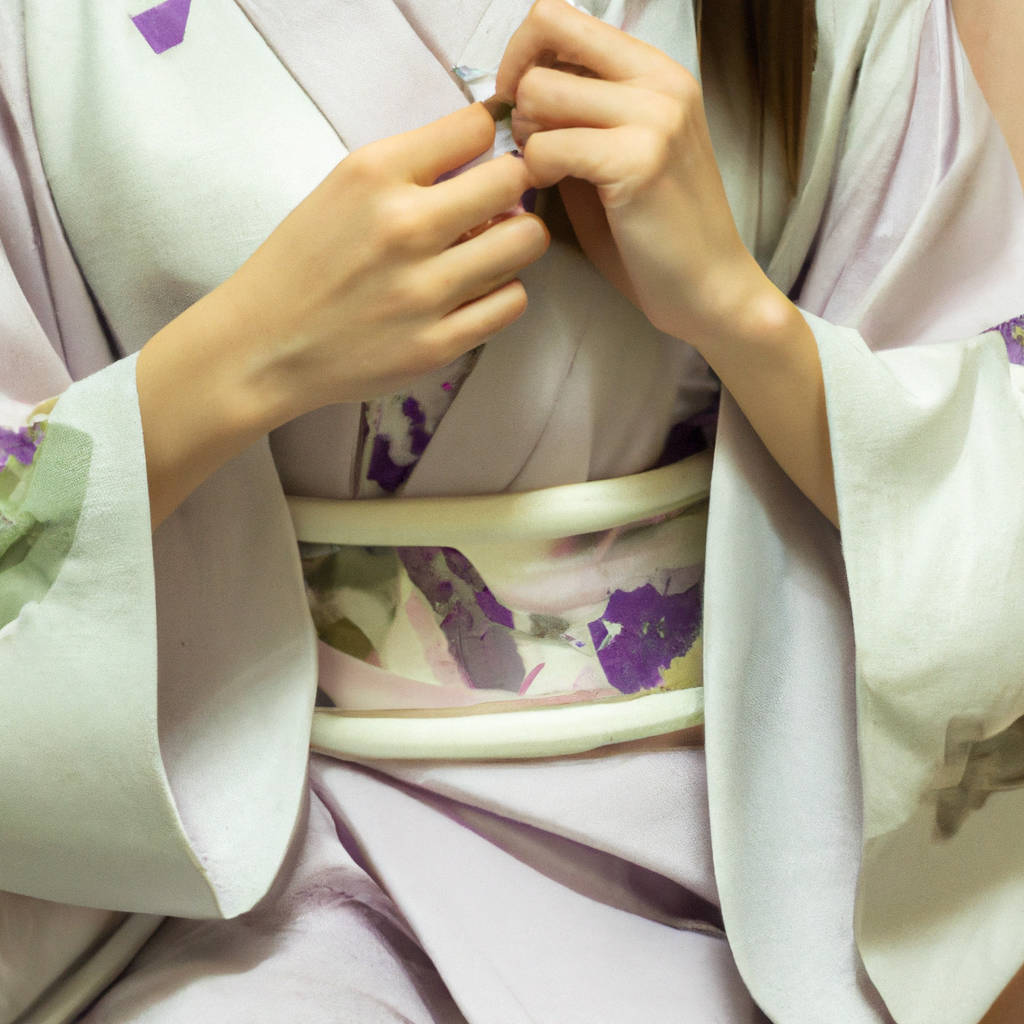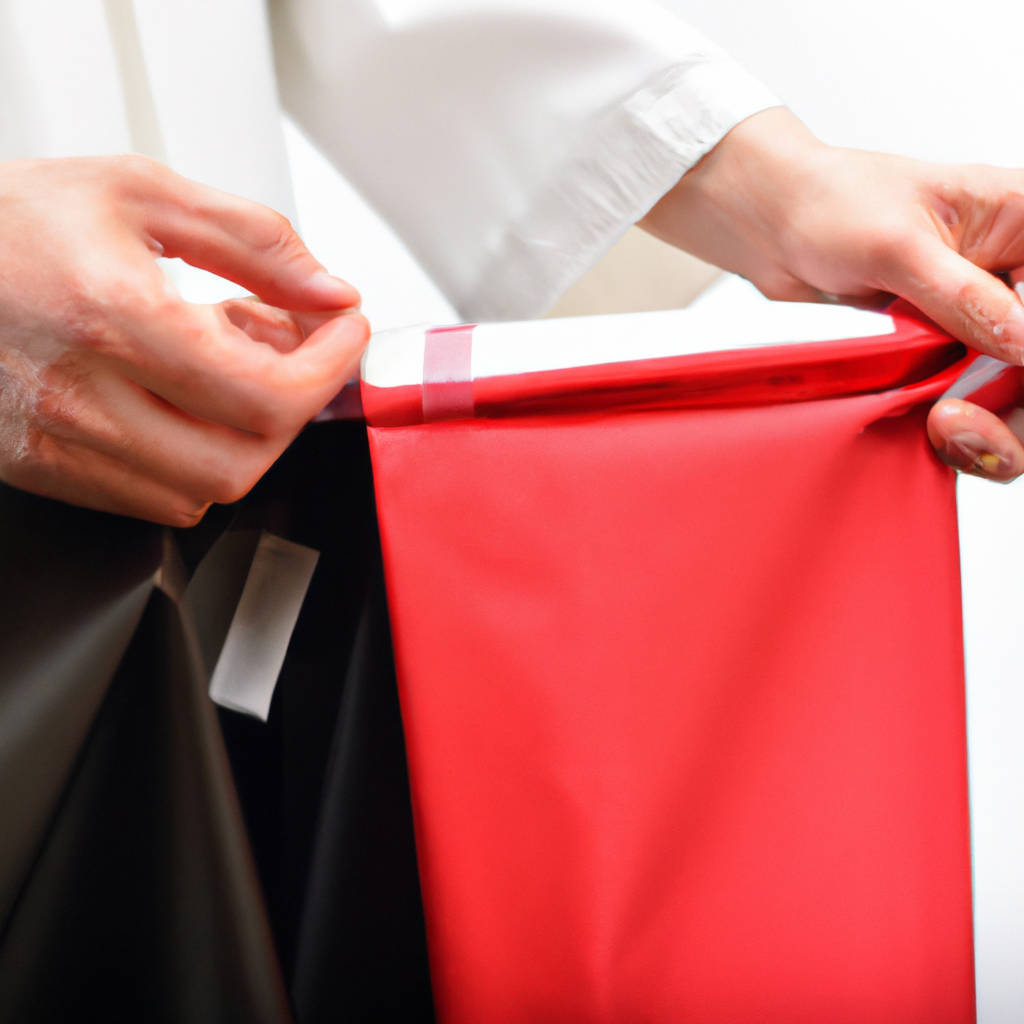How to Dress in a Kimono
Dressing in a kimono is a traditional and cultural practice that requires careful attention to detail. When putting on a kimono, it is important to first start with the undergarments, which consist of a white undergarment called a juban and a waistband called a datejime.
Next, the kimono itself is wrapped around the body with the left side overlapping the right. The length of the kimono should be adjusted so that it falls to the ankle. The obi, or sash, is then tied around the waist in a specific manner depending on the occasion and the wearer’s age and marital status. Accessories such as a decorative obidome or obijime can be added to enhance the overall look.
Finally, the sleeves of the kimono should be adjusted to the appropriate length and the collar should be straightened. Overall, dressing in a kimono requires patience and attention to detail in order to properly honor and respect the tradition of wearing this beautiful garment.

Altering the Length and Tying the Waist
Altering the length and tying the waist of clothing items can be a controversial practice in the fashion industry. Some people argue that making these alterations is a way to customize and personalize clothing to better fit one’s body shape and style preferences.
For example, shortening the hem of a dress or pants can make them more flattering and comfortable to wear. Tying the waist of a shirt or dress can create a more fitted and tailored look. On the other hand, critics of altering the length and tying the waist argue that these practices can distort the original design and intended fit of the garment. They believe that altering clothing in this way can detract from the overall aesthetic and quality of the piece.
Additionally, some argue that altering clothing in this way can perpetuate unrealistic beauty standards and promote unhealthy body image ideals. Despite the controversy surrounding altering the length and tying the waist of clothing items, many people continue to engage in these practices as a way to express their individuality and creativity through fashion.
Ultimately, the decision to alter the length and tie the waist of clothing items is a personal one that should be made based on individual preferences and comfort. As long as these alterations are done in a safe and respectful manner, there is no inherent harm in customizing clothing to better suit one’s style and body shape.
Adjusting the Top of Your Kimono
When it comes to adjusting the top of your kimono, it is important to ensure that it fits properly and looks flattering on your body. One key aspect of adjusting the top of your kimono is making sure that the collar lays flat against your neck and shoulders. If the collar is too loose or too tight, it can create an unbalanced and disheveled appearance.
Additionally, you’ll want to make sure that the kimono wraps comfortably around your body without any gaping or pulling. This will ensure that you can move freely and comfortably while wearing your kimono. Another important aspect of adjusting the top of your kimono is tying the obi securely and at the right height. This will help to create a clean and polished look. Overall, taking the time to properly adjust the top of your kimono will ensure that you look and feel your best while wearing this traditional garment.

Selecting the Right Kimono Size
Choosing the correct kimono size is essential to ensure a comfortable and flattering fit. When selecting a kimono, it is important to consider both the length and width of the garment. The length of the kimono should ideally fall just above the ankle, allowing for a graceful drape that elongates the body. Additionally, the width of the kimono should be spacious enough to allow for ease of movement without feeling constricted.
To determine the proper size, individuals can refer to sizing charts provided by retailers or consult with a kimono expert for personalized guidance. It is important to note that kimono sizes may vary depending on the style and design of the garment, so it is recommended to try on different sizes to find the perfect fit.
Ultimately, selecting the right kimono size is essential for both comfort and style, ensuring that the garment enhances the wearer’s silhouette and exudes traditional elegance. By taking the time to carefully consider the length and width of the kimono, individuals can enjoy the beauty and sophistication of this timeless garment with confidence.
Wrapping the Obi Belt
The traditional Japanese garment known as the kimono is often worn with a sash called an obi belt. Wrapping the obi belt correctly is crucial to maintaining the overall aesthetic of the outfit. There are various ways to tie the obi belt, depending on the occasion and the wearer’s personal style. One common method is the “taiko musubi,” which involves folding the obi in half and tying it in a bow at the back.
Another popular style is the “o-taiko musubi,” where the obi is folded into a large bow at the back. Some people prefer to tie the obi in a simple knot, known as the “kai no kuchi musubi,” for a more understated look. Regardless of the method chosen, the key is to ensure that the obi belt is secure and properly positioned around the waist. Wrapping the obi belt is considered an art form in Japan, with many intricate and elaborate techniques passed down through generations.
It is a skill that requires practice and precision to master, but once achieved, it adds an extra touch of elegance to the kimono ensemble. In modern times, there are even classes and tutorials available for those who wish to learn the proper way to tie the obi belt. Overall, wrapping the obi belt is an important aspect of wearing a kimono and should be done with care and attention to detail.

Adding Accessories
When it comes to personalizing your belongings, adding accessories is a fun and creative way to make them truly your own. Whether it’s adding a pop of color with a scarf or hat, incorporating a statement piece of jewelry, or even customizing your phone case with stickers or charms, accessories are a great way to express your individual style and personality.
By adding accessories to your outfits or belongings, you can easily elevate your look and make a statement without saying a word. Plus, accessories can also serve a practical purpose, such as adding a keychain to your keys for easy identification or attaching a charm to your bag for a touch of flair.
From fashion accessories like belts and sunglasses to tech accessories like headphones and laptop cases, there are endless possibilities for adding that extra touch of personality to your belongings. So go ahead, have fun experimenting with different accessories and see how they can enhance your style and make your belongings truly one-of-a-kind.
Perfecting the Look
When it comes to perfecting the look, individuals often strive to achieve their ideal aesthetic through various means. From fashion choices to grooming routines, people put a lot of effort into presenting themselves in a way that aligns with their personal style and preferences. This can involve experimenting with different hair styles, makeup looks, and clothing options until they find the perfect combination that makes them feel confident and comfortable in their own skin.
Additionally, the rise of social media has further emphasized the importance of appearance, with influencers and celebrities setting trends and influencing how people perceive beauty. As a result, many individuals feel pressure to conform to certain standards of beauty in order to fit in or be considered attractive by society. However, perfecting the look is ultimately a subjective and personal journey that should be driven by individual preferences and self-expression rather than external expectations.
It’s important for individuals to feel empowered to experiment with their appearance and embrace their unique features, rather than striving for perfection based on societal norms. By embracing diversity and celebrating individuality, people can truly perfect their look in a way that feels authentic and true to themselves. Ultimately, the key to perfecting the look lies in feeling confident and comfortable in one’s own skin, regardless of what others may deem as fashionable or attractive.
